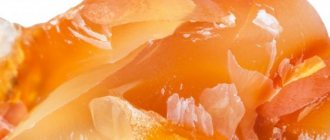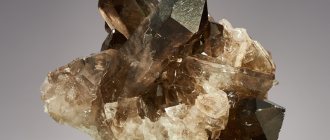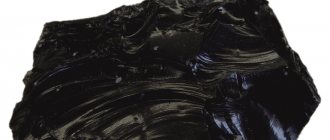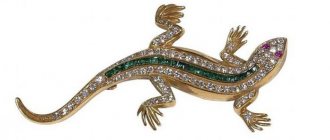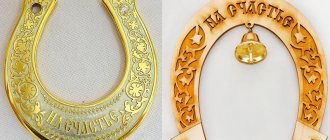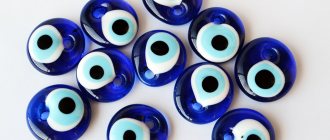- Which: Semi-precious;
- Place of Birth: -;
- Colors: Black, green, white, blue or red.;
- Mohs hardness: 7.5-8.5;
- Transparency: Transparent or translucent;
- Density: 6.5-10 g/cm3;
- Formula: Zr0.8Ca0.2O1.92;
- Suitable person according to zodiac sign: Everyone;
- How much does it cost: from 1 dollar per gram.
The limitation of natural resources has led humanity to the creation of their synthetic analogues. Scientific developments and jewelry making were not spared.
In 1968, an artificial double of the diamond was developed - the cubic zirconia stone. Its similarity to the precious standard has given rise to many fraudulent schemes, which has provoked a negative attitude towards the valuable scientific invention.
History of invention
The artificial stone owes its name to the Physical Institute of the Lebedev Academy of Sciences (FIAN), where it was created. Initially, the goal of the research was to obtain a material with certain optical properties necessary for laser equipment.
But already in the early 70s of the last century, cubic zirconia caused panic in foreign jewelry markets: a stone almost identical to a diamond cost a penny. In the 1990s alone, crystals with a total weight of 50,000,000 carats were produced worldwide. Since then, production rates have only increased.
Interesting Facts
A number of interesting factors are characteristic of cubic zirconia:
- The name of the stone is derived from the abbreviation FIAN, which stands for Physical Institute of the USSR Academy of Sciences. It was in this organization that scientists created a substance based on zirconium and hafnium oxide.
- The decorative characteristics of the stone give it the ability to imitate any minerals of natural origin. By adding various oxides to the formula, it is possible to obtain gems of primary colors.
- There is a unique light lavender shade of cubic zirconia. This color is not found in natural stones.
- When purchasing jewelry abroad, they are often marked Cubic Zirconia. Answering the question of what cubic zirconium is, it is worth noting that this is a foreign name for cubic zirconia. However, calling it zirconium is incorrect, because this is the name of the metal.
Cubic zirconia is a popular stone that is actively used in the jewelry industry. This gem is characterized by a spectacular appearance and an affordable price. That's why he is very popular.
Confusion in terminology
The term “cubic zirconia” is used only in the CIS countries and Eastern Europe.
In the global jewelry community, other names are used to describe the insert in a product:
- jewellite;
- zirconite;
- daimonsquay.
Cubic zirconia is incorrectly called zirconium. Zirconium is a metal, and only its cubic dioxide has a crystal structure.
In addition, there is zircon, a natural semi-precious stone. A mineral of igneous origin is several times more expensive than cubic zirconia.
Cubic zirconia is also often confused with Swarovski crystals, which are a proprietary type of crystal.
Kinds
Classic artificial minerals have a “fire effect”: they sparkle in the light, almost like a diamond.
Thanks to the adjustment of the chemical composition, crystals come in not only white, but also other colors, which allows you to imitate different gems. Common colors include:
Pink
Pink, turning into red, purple. To obtain shades, erbium or neodymium is used in a certain amount. Such artificial minerals are similar to garnets and rubies.
Blue
From blue to blue. The stones appear after spraying a mixture of cobalt and aluminum. The work is carried out in a vacuum. Aquamarines, sapphires, and topazes are imitated in this way.
Green
To obtain it, chromium is added to the composition. The crystals resemble emeralds, although the attempt is not considered particularly successful.
Yellow
Shades from light yellow to red. Jewelry with these inserts adds positivity to a person’s image and is associated with sunlight. Cerium is included in the melt here.
Black
Black color is popular among jewelers. To get it, you don’t need to change the composition. After treatment at high temperatures, the stones turn white or black.
The production of cubic zirconia is a complex process, but scientists have learned to keep costs to a minimum. As a result, the cost of one gram today is about six dollars or even less.
Appearance and color options
Cubic zirconium dioxide is colorless, but technology allows it to be given in more than 40 different shades.
Most Popular:
- yellow;
- pink;
- green;
- purple;
- brown with a golden tint.
In addition, a color changing effect is possible, allowing you to imitate rare and very expensive alexandrite. At the same time, scientists still cannot obtain cubic zirconia of emerald green color.
Physical and chemical properties
Cubic zirconia is an artificial gem obtained in a laboratory using a melt of zirconium dioxide. To add stability to the material, the chemical composition during the synthesis process is supplemented with oxides of calcium, manganese and yttrium. The result is a colorless, highly shiny crystal that looks like a diamond, is not fragile, less hard (7.5 versus 10 for a diamond), but more dense (6.5-10 versus 3.5 for a diamond).
| Formula | Zr0.8Ca0.2O1.92 |
| Color | Colorless like diamond, pink, red, green, yellow, brown, black, purple, multicolor |
| Shine | Diamond |
| Hardness | 7,5-8,5 |
| Transparency | Most often transparent and translucent, but opaque may also occur. |
| Cleavage | Absent |
| Strength | non-fragile |
| Kink | Uneven |
| Density | 6.5-10 g/cm3 |
| singonia | Cubic |
| Refractive index | 2.15-2.25 (close to diamond) |
| Additives (impurities) | Copper, titanium, erbium, neodymium, cerium, Nchrome and others |
| Dispersion | 0,06 |
| Naturalness | Artificial (grows at a speed of 8-10 millimeters per hour) |
The physical properties and low cost of cubic zirconia made it possible to use them in various areas of human life and activity - the chemical industry, medicine, dentistry and others.
Precious or not?
Cubic zirconia enchants with its excellent play of light and perfect purity. In appearance, it is in no way inferior to precious stones and is difficult to distinguish from a diamond. Cubic zirconias are widely used in jewelry and make it possible to create real masterpieces, each of which has considerable value. All this leads to the question, is cubic zirconia a gemstone or not?
Cubic zirconia is often called an artificial diamond. But its origin and low cost of production devalue the magnificent appearance of the crystal - it is not at all rare. This means that cubic zirconia cannot be a precious stone.
How to wear and care
In order for the stone to continue to have a positive impact on a person and his life, it is necessary to carefully monitor its condition. Over time, cubic zirconia may darken, become duller, or become damaged due to mechanical stress.
To restore its appearance, you can contact a jeweler or clean it yourself. Specialized stores have solutions and wipes that help restore the stone to its former attractive appearance.
Some owners of such jewelry use traditional methods for cleaning, for example, toothpaste, ammonia and other substances.
Interesting! It is important to know that cubic zirconia can be damaged by exposure to household chemicals, oils or cosmetics. In the latter case, jewelers recommend wearing jewelry after applying makeup.
Particular attention should be paid to storing the stone. It is advisable to use a special soft case that will prevent exposure to ultraviolet radiation or mechanical stress.
How to distinguish cubic zirconia from a diamond?
The similarity of cubic zirconia with a diamond has led to it being used as a counterfeit of its precious “brother,” but there are several ways to help distinguish them:
- Crystal purity. Cubic zirconia can only imitate a diamond of very good quality, without internal cracks or defects. Precious stones of perfect purity, especially large ones, are quite rare in nature. So if you see an inexpensive crystal with absolutely no flaws, it means it is cubic zirconia.
- Quality of cut. Upon closer examination through a magnifying glass or microscope, you can notice that cubic zirconia crystals have blurred and double edges. However, if the fake is of good quality, the cutting can also be performed at the highest level.
- Dirt-repellent properties. If you drop a little oil on the surface of a diamond, it will easily flow down the surface. Imitation tends to accumulate dust, grease and dirt, which is why it loses its shine over time.
- Weight of the stone. Zirconium dioxide has a higher density than diamond. Two stones of the same size can be weighed: the one that turns out to be lighter is the diamond. True, this method is difficult to implement if the crystals are fixed in the product.
- Hardness. Diamond is the hardest of all minerals; it can cut glass, but imitation will only leave a mark on the surface. In addition, a diamond can scratch cubic zirconia, but cubic zirconia cannot scratch a diamond.
- Thermal conductivity. A natural stone can be recognized by pressing it to the cheek - the surface of the mineral almost always remains cold. More accurate identification is provided by diamond testers - devices that determine the thermal conductivity of a stone, and based on the obtained values, they can easily recognize an imitation.
Unfortunately, there are such skillful fakes that none of the above methods gives complete confidence in the authenticity of the diamond. An expert opinion and certificate for a stone can only be issued by a gemological laboratory.
Varieties
Cubic zirconia can imitate not only diamonds, but also rubies, sapphires, emeralds, zircons and other precious stones. This is achieved by adding metal oxides to the grown cubic zirconia.
- Cubic zirconia with an admixture of copper gets a yellow color, and as a result the stone resembles citrine;
- Titanium gives the artificial crystal its golden brown color;
- Chrome colors the stone green, similar to emeralds;
- Neodymium and erbium give the synthetic stone purple and pink colors, and the stones become similar to alexandrites, rubies and garnets, and amethysts.
Cubic zirconia can even be painted black and white, and you can also create a chameleon effect so that the stone changes color with changing lighting.
Who is suitable according to their zodiac sign?
It is generally accepted that cubic zirconias are suitable for almost all zodiac signs. Before purchasing, try to listen to your own intuition - it will help you choose a stone that matches your inner self.
In addition, there are recommendations on how to choose the shade of a stone according to your horoscope:
- Capricorn. For people born under the sign of Capricorn, stones of dark colors are recommended - rich green, gray and even black. Such shades are combined with their pragmatism and gloomy character. But muted colors do not enhance the gloominess of their owner, but, on the contrary, allow one to consider one’s own positive traits.
- Aquarius. Aquarius, like other signs belonging to the element of Air, is characterized by lightness and frivolity. These character traits are best emphasized by transparent, light blue stones. For a girl born under this sign, we can recommend platinum or silver earrings with such an insert as an ideal decoration.
- Fish. People born under the sign of Pisces are suited to all shades of stones reminiscent of the sea - blue, green, turquoise. Even a simple ring with a central cubic zirconia of this color can become a talisman for them, protecting them from the “evil eye” and envious people.
- Aries. If you decide to buy Aries jewelry with a cubic zirconia insert, pay attention to warm, rich colors - green and yellow. They have a calming effect, which is so necessary for overly hot-tempered representatives of the element of Fire. The hardness of their character also goes well with the hardness of cubic zirconia.
- Calf. Taurus is a zodiac sign with a soft, calm, sentimental disposition. If you give him the opportunity to choose a stone on his own, he will certainly choose yellow, green, and brown colors. They harmoniously combine with his inner “I” and give confidence in his own abilities.
- Twins. For Gemini, the ideal stone would be amethyst. It is able to express the inclination of this zodiac sign to everything mystical and mysterious, improve intuition, and also protect its owner from ill-wishers. For daily wear, amethyst can be replaced with purple cubic zirconia.
- Cancer. Cancer is one of the most sensitive signs of the zodiac. He needs strong protective amulets, especially those made of silver. Transparent or blue cubic zirconia would be appropriate as inserts. Stones of these shades promote high mental activity and protect against diseases.
- A lion. Those who love attention and bright colors - Leos - are recommended to wear jewelry with rubies and garnets. This zodiac sign is a bright representative of the element of Fire, and its powerful energy can be enhanced with red or pink stones, including cubic zirconia. Such crystals will look especially good in a gold frame.
- Virgo. Virgos are a zodiac sign with a complex character. He is characterized by pragmatism, accuracy and mysticism at the same time. To emphasize these properties, Virgos are recommended to wear stones in white, green and lavender shades.
- Scales. Libra is a sign of the Zodiac, prone to inconstancy everywhere and in everything. Turquoise or dark blue stones can evoke a sense of peace of mind and calm the nervous system. The only exception is Libra, born from October 14 to 23: astrologers recommend that they wear exclusively natural stones.
- Scorpion. The patron of this sign is Mars, which gives Scorpios irrepressible energy. Talisman stones that can strengthen it are dark red garnet, tourmaline, ruby or similar cubic zirconia. They have a beneficial effect on the functioning of the cardiovascular system and also bring good luck in love. In addition, Scorpio is impressed by crystals with a color-changing effect, which have the same strong energy as himself.
- Sagittarius. As a true representative of the element of Fire, Sagittarius is capable of a flurry of emotions and feelings. But his energy must be directed in a creative direction. This is facilitated by stones of all shades of blue - from soft blue to cornflower blue, reminiscent of Kashmir sapphire.
Cubic zirconia does not have any regulations or restrictions regarding the names of its owners.
Talismans and amulets
From a magical point of view, cubic zirconias are suitable for almost everyone. On the practical side, when choosing decoration, you should consider the following points:
- Stones set in gold or platinum should be worn for special occasions, while silver is an excellent option for everyday wear.
- The pink variety is a symbol of youth and romance, that is, they are most suitable for young, pretty girls.
- Dark cubic zirconias are preferable for men's jewelry.
- Multi-colored stone looks elegant in combination with a business style. It softens the image and gives it mystery.
- Costume jewelry with cubic zirconia framed in steel or cupronickel is a youth version of jewelry.
- Large cubic zirconias, complemented by a small scattering of the same stones, look noble and elegant. Such jewelry will perfectly complement an evening outfit.
- Small artificial diamonds perfectly set off natural gems. Such products look elegant and rich. They are suitable for business meetings and gatherings in high society.
In terms of names and professions, there are no restrictions on wearing cubic zirconia. The stone is suitable for a person of any age and character.
Magic properties
Unlike natural minerals, cubic zirconia initially does not carry any energy - neither positive nor negative.
It has no defects, cracks, and is perfectly transparent. It is a clean vessel that needs to be filled. The magical properties that cubic zirconia will have depend on its owner. The crystal is able to remember any emotions, thoughts, events. It can be turned into your own amulet if you wear it at moments of success and achievements in life.
At the same time, the stone cannot be given into the wrong hands, even temporarily. If you were given a product with cubic zirconia that has already been used, you need to carry out a cleansing procedure: put it in a vessel with spring water or hold it over a flame.
Cubic zirconia is called the stone of loneliness. He is forced to constantly be in the shadow of his “big brothers” - precious and semi-precious stones, to act as an imitation and counterfeit. Some esotericists believe that he personifies duplicity and falsehood, but this is not so.
The damaged reputation of cubic zirconia is a consequence of human actions aimed at easily making a profit by deception.
Cubic zirconia brings good luck:
- travelers;
- careerists;
- scientists;
- any lonely people.
It helps to do a large amount of work in a short time and has a beneficial effect on the overall tone of the body. At the same time, synthetic imitation diamonds are not recommended for people with clear leadership qualities.
Price
[blok13] Cubic zirconia is not a precious stone, as it is not at all rare. Its price is quite affordable for most people.
The cost of jewelry with cubic zirconia depends on:
- stone quality;
- values of metal for the frame.
On the global jewelry market, the average price of cubic zirconia per 1 gram is:
- small colorless or transparent crystals - 0,5 $;
- colored, similar to precious stones - $1-3 (if similar to ruby, sapphire and blue topaz - twice as expensive);
- large, multi-colored, and also imitating diamond placers - 3–5 $.
Examples of prices for jewelry with cubic zirconia in Russian online stores:
- silver earrings (925 sterling silver) — RUB 2,790. ;
- silver bracelet (925 sterling silver) — RUB 3,990. ;
- earrings made of gold with green cubic zirconia (gold purity 585) - RUB 6,350. ;
- gold ring (gold purity 585) - RUB 9,830. ;
- gold pendant with green and blue cubic zirconia (gold purity 585) - RUB 12,890.
[blok14]
What stones does it go with?
A laboratory-grown crystal can be combined with any natural stones. From a decorative point of view, the most versatile is colorless cubic zirconia - it sits well alongside transparent topazes, amethysts, citrines, and garnets. Surrounded by small cubic zirconias, each of these stones will shine brighter.
The proximity to cubic zirconia also enhances the energetic impact of natural minerals. Any piece of jewelry that combines a precious stone and an artificial one will be a powerful talisman. It must be worn with caution.
Applications of stone
Today, when describing cubic zirconia, we can say that it is the most popular, beautiful, artificially synthesized gemstone. Jewelers use it as an independent insert in silver, gold, and platinum products. But greater interest is shown in combined jewelry. The main assortment in jewelry stores consists of cubic zirconia jewelry of various sizes.
Cubic zirconia ceramics are produced using artificial crystals. For ophthalmology, inert implants and low-traumatic scalpels are produced, and for microelectronics, substrates are produced for obtaining conductor-on-dielectric structures. Ceramic tools are durable and lightweight. More recently, manufacturers in the technical industry have begun to produce ceramic cases for watches and bracelets. Craftsmen actively use cubic zirconia for their design projects.
After the invention of synthetic crystal, jewelers claim that buyer interest in natural diamonds has fallen. Thanks to technological processes, manufacturers are constantly expanding their range of artificial stones. Today, artificial minerals are also grown in industrial enterprises.
Jewelry
Availability and wide range of colors have ensured cubic zirconia's high popularity in jewelry. Artificial stone is found in products made of silver, gold, and platinum.
It can favorably set off the central gem in a carmesine frame or even sit next to a diamond - however, the latter combination is considered unethical.
However, cubic zirconia allows you to create jewelry of high artistic value, comparable to works of art.
This is an excellent educational material for novice jewelers, which is easy to purchase at hardware stores. The synthetic analogue gives everyone the opportunity to buy bold, stylish, unusual products or restore their favorite jewelry for a low fee.
Color palette
After obtaining cubic zirconia, experiments on it did not stop. Over time, researchers learned to color white stone. Transparent, like glass, gems were bought by those who could not afford diamonds.
The rest were not interested in them. But after the crystal was given different shades, everything changed. After all, cubic zirconia could now imitate not only diamond, but also other stones.
Cubic zirconia can be found in all colors of the rainbow.
Color palette:
- blue, blue, violet - created using cobalt or aluminum;
- green - chrome is responsible for shades of green;
- yellow - obtained by adding copper;
- pink, red, orange - when interacting with neodymium;
- brown - these tones appear thanks to titanium.
Advanced technologies allow you to endlessly experiment with shades of gemstones. As a result of research, even three-color specimens appeared.
Depending on the shade, the crystal copies the appearance of a particular natural mineral:
- yellow stones - citrine;
- green samples resemble chrome dioxide;
- blue stones - similar to topazes;
- blue - for sapphires;
- red ones resemble garnets and rubies;
- black cubic zirconia - very similar to carbonado.
Charms with cubic zirconia
The ability to accumulate and multiply energy makes it possible to use the crystal to create various amulets.
The most common of them:
- horseshoe;
- scooping spoon;
- Tibetan knot of happiness;
- Four-leaf clover;
- star of Erzgamma.
There are also pagan amulets with cubic zirconia inserts. Thanks to crystals, their protective effect is enhanced.
Care
Products with cubic zirconia should be wiped with a damp cloth and protected from exposure to cosmetics and chlorine. It is better to remove such jewelry while doing housework.
To extend the life of the stone, it is worth protecting it from possible scratches and mechanical damage. It is advisable to store jewelry in a closed case.
Compatibility with different zodiac signs
Each stone has its own characteristics, and the same mineral will not suit everyone according to their horoscope and zodiac sign. Let's consider compatibility and find out who is suitable for cubic zirconia according to their zodiac sign:
- Aries - esotericists believe that for this zodiac sign, jewelry with cubic zirconia will be the most successful solution. The owners will be able to achieve their desired goals, attract fortune and protect themselves from ill-wishers. For all other representatives of the zodiac signs, it is permissible to choose a mineral; a new product with cubic zirconia definitely does not cause harm.
The elements will help you choose which zodiac stone suits you. She will tell you what color stone you should give preference to. White and blue colors should be purchased by people born under the sign of the water element. These are Pisces, Scorpios and Cancers. Yellow cubic zirconias will help representatives of the air sign. Aries, Gemini and Libra will feel comfortable and confident in rings, earrings or pendants with a yellow stone. For earth signs, jewelry with a black or emerald mineral is suitable. Fire signs – Leo and Sagittarius – should stick to red.
Each talisman or acquires magical power only if a person is ready to believe in it. If you have doubts and mistrust, you should buy cubic zirconia only for aesthetic reasons. This relatively inexpensive stone will be a worthy accessory to any outfit for an important event.
